ICF Blocks – Walls Stacked and Filled with Concrete
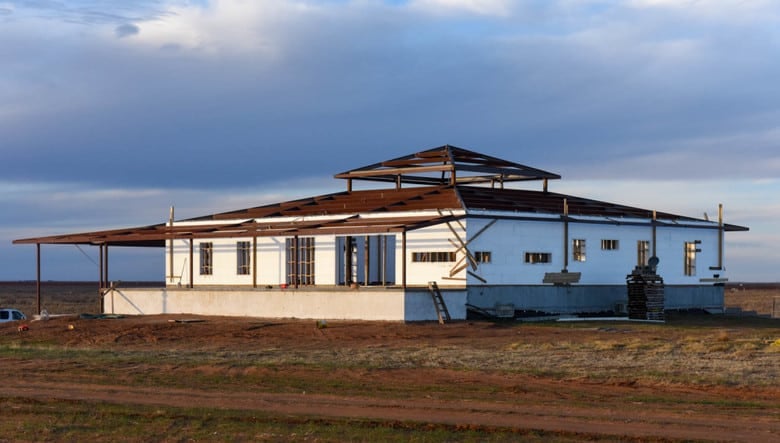 For a chronological listing of our building projects with ICF (or insulated concrete forms), be sure to look through the ICF Building Index.
For a chronological listing of our building projects with ICF (or insulated concrete forms), be sure to look through the ICF Building Index.
This is how our ICF block walls look now that they are stacked and filled with concrete. ICF blocks are insulated concrete forms that stack like legos and are easy for DIY’ers like us!
But, all is not bliss…
The best laid plans of mice and men…
Oh, I’ll just get right to it…
Last week I was so excited that the steel roof and supports were actually finished and we were once again making progress on our house – and, I still am – but things took a little unplanned twist!
We had planned to stack the ICF blocks Monday and Tuesday since the steel was finished, fill them with concrete Wednesday and the roofers would put the metal roof and be done by the end of the week. There was just one little hiccup – rain.
If you remember, the temporary roof over the basement is TPO (thermo plastic olefin) which is a commercial flat roofing product. We had cut it so the steel would sit securely on the supports underneath which left the sub-flooring exposed to the weather. Had we had sunny weather, this would not be a problem. But, we had rain!
John and the boys taped plastic to cover the openings but we still had water leaks. In fact, I woke up in the night to hear rain in the boys’ room – that is not what you want to hear at 2 am! Thankfully, no real damage was done and it was just the inconvenience of mopping up water.
We will just call it character building and leave it at that!
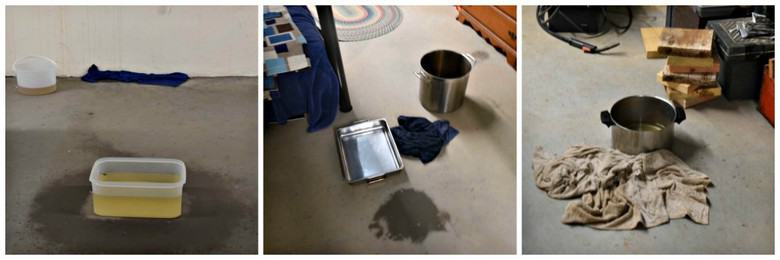
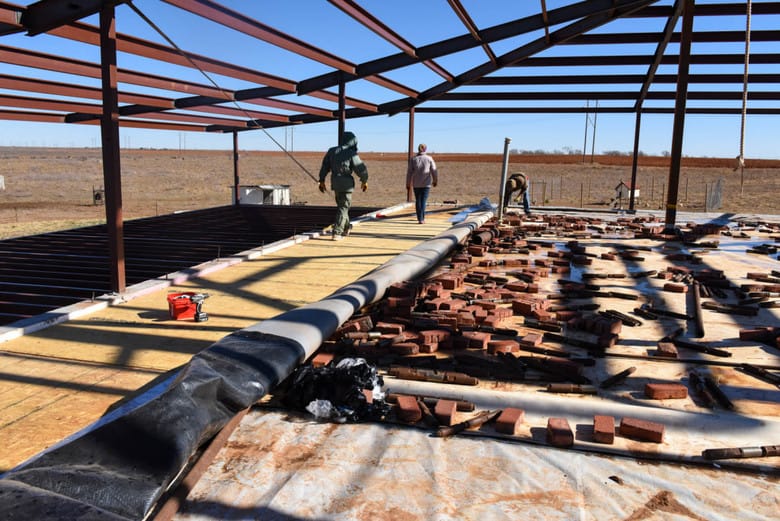
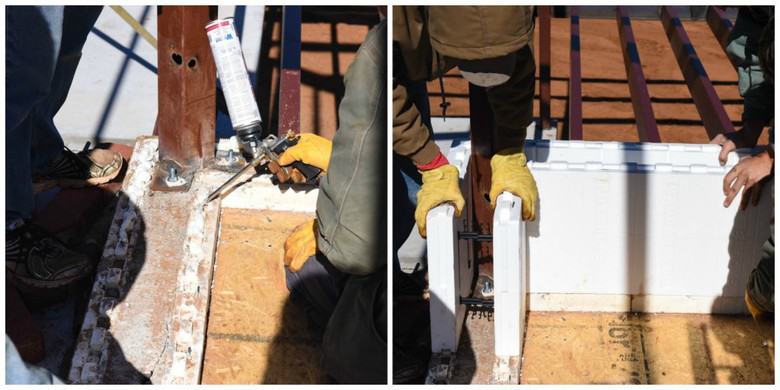
The beauty of ICF blocks is the eases in which they go up – they are like legos for adults. Only the first course has to be glued. You cut to fit, snap together and continue until you are done! Cutting around the steel posts, windows and doors is more time consuming and slows down the progress. Still, it is much quicker than building with wood and has a terrific insulation value.
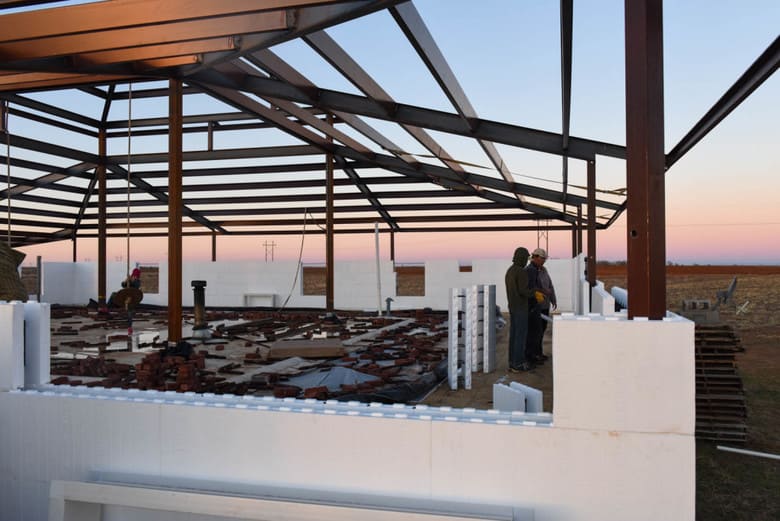
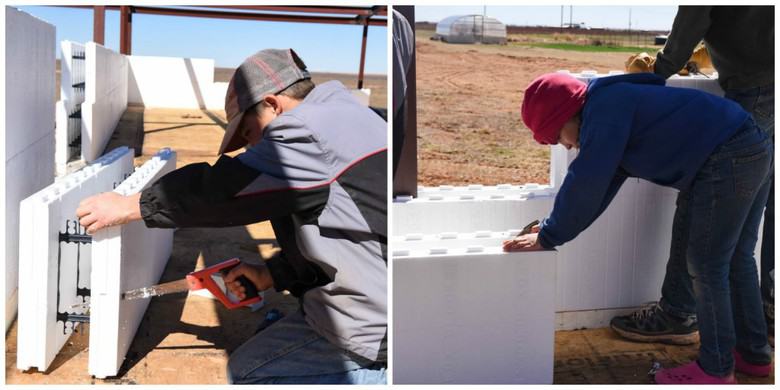
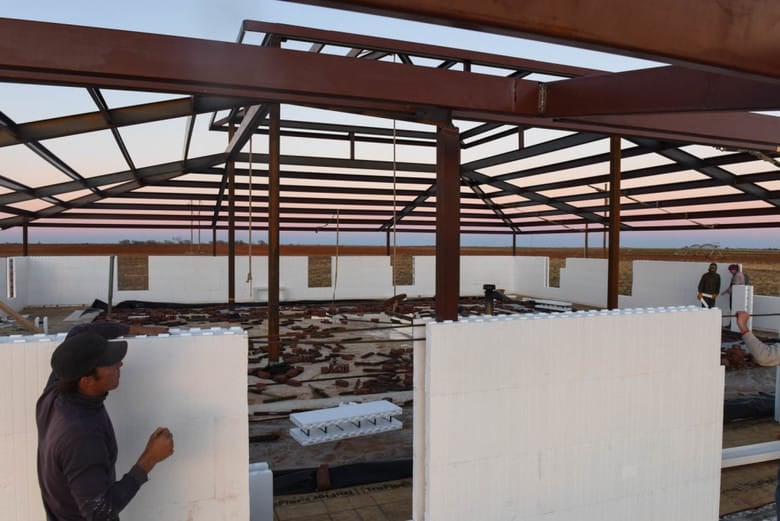
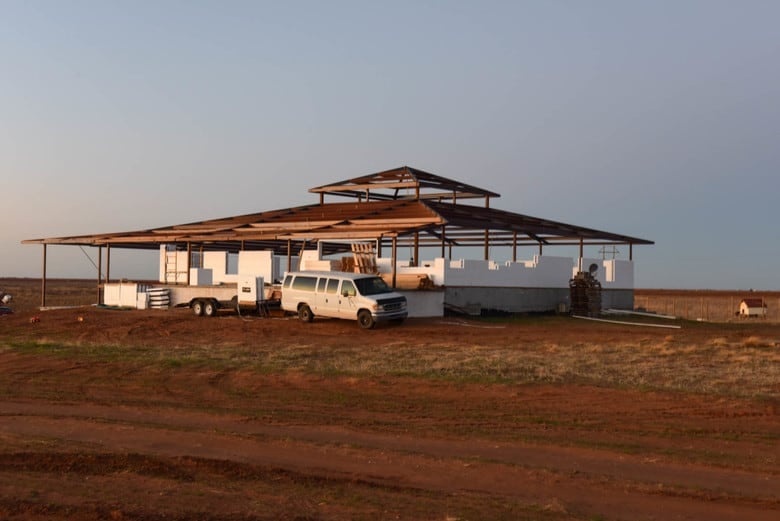
On the left, in the photo below, you can see a 3×5 ft window. On the right, the boys and John are fitting the v-buck for a bay window which will be in the dining area. The v-buck fit very securely around the ICF blocks.
You can also see the hole that has been cut in the bottom of the v-buck on the left – that makes it easier to be sure the area below the window is filled with concrete.
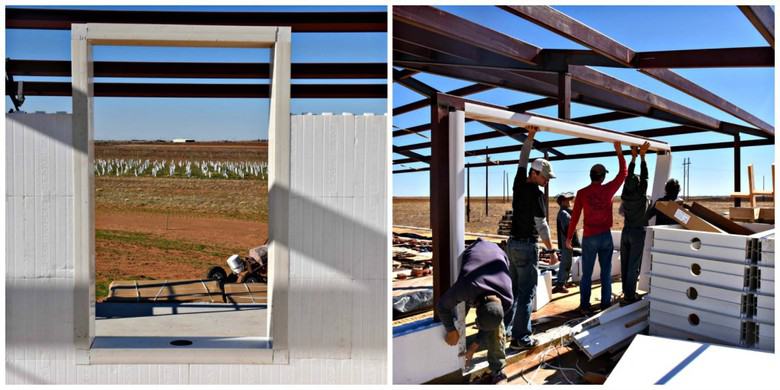
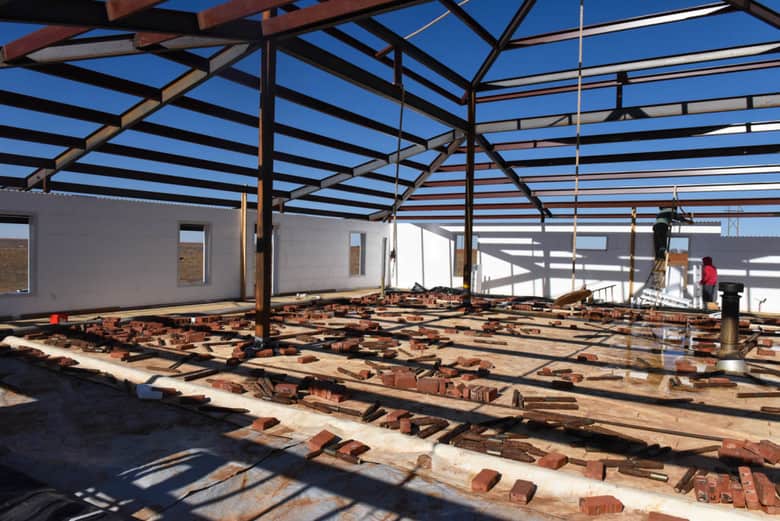
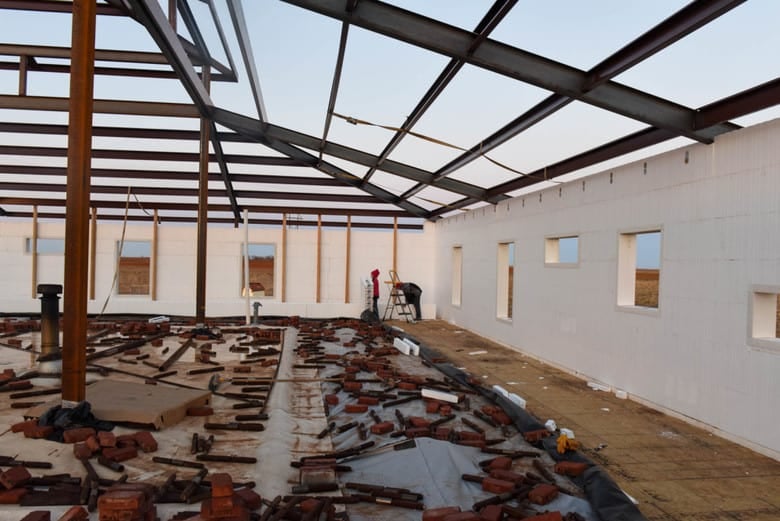
Rebar is put into the wall every third course. You can see below (left) that the ICF blocks have black plastic braces that hold the rebar and also give support to the finished wall. Rebar is also placed vertically from the top down into the wall to help tie it all together giving more strength. On the right, you can see the top of the rebar sticking out above the top of the ICF blocks as another long rod is put into place.
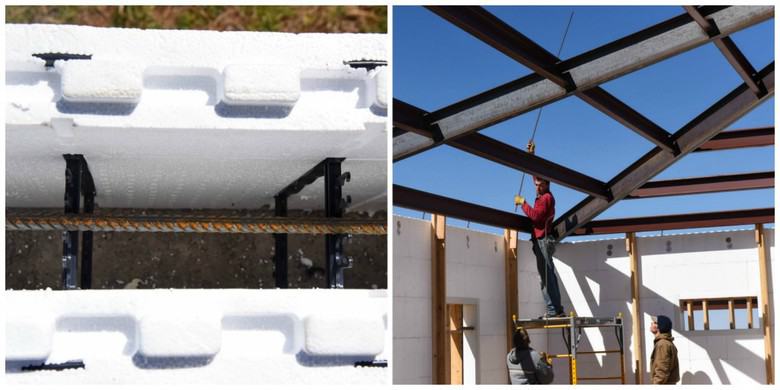
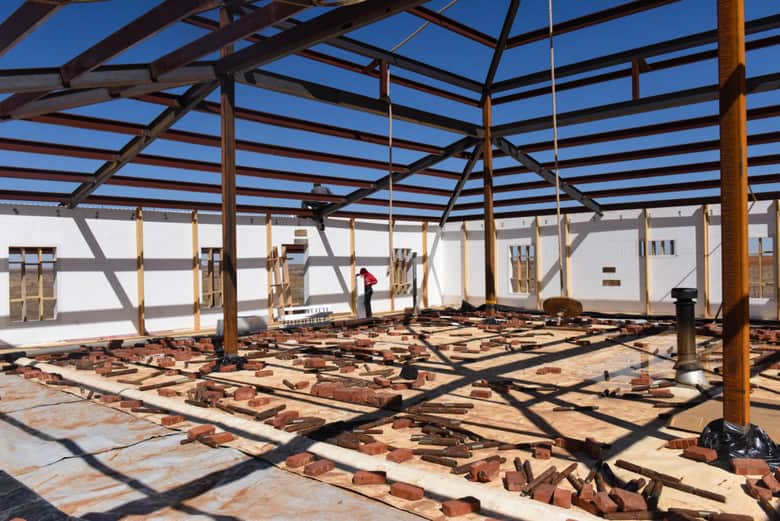
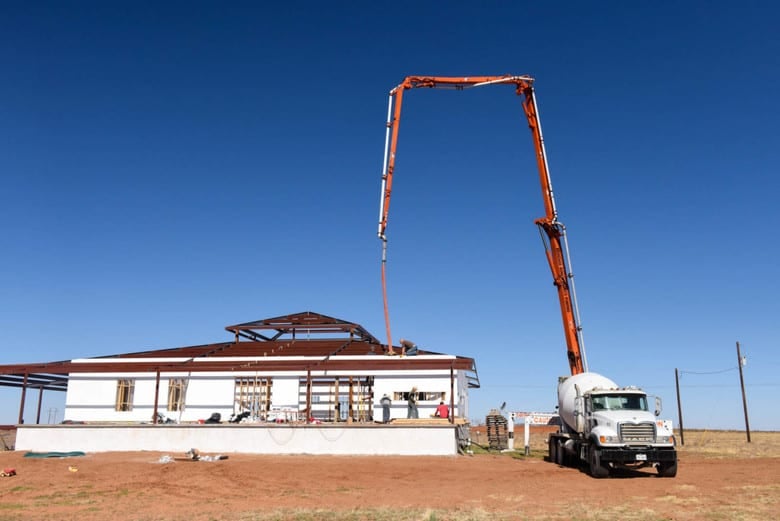
The pumper truck operator has a handheld device with a bunch of toggle switches to control the arm, hose and concrete. This operator stayed on the scaffolding with John as others pushed them around the walls. Ideally, you fill the wall in thirds which allows the concrete to set up a bit and harden before the next layer is added.
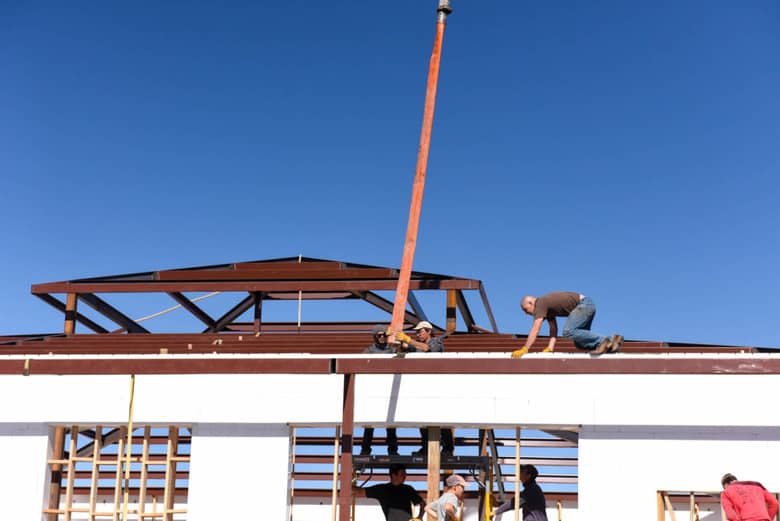
Keep in mind, this is not our first ICF building and we have never had a big blow out – meaning, the concrete causes the ICF block to bulge and finally blows out the side – until now….
Notice the pile of concrete on the ground that they are standing in!
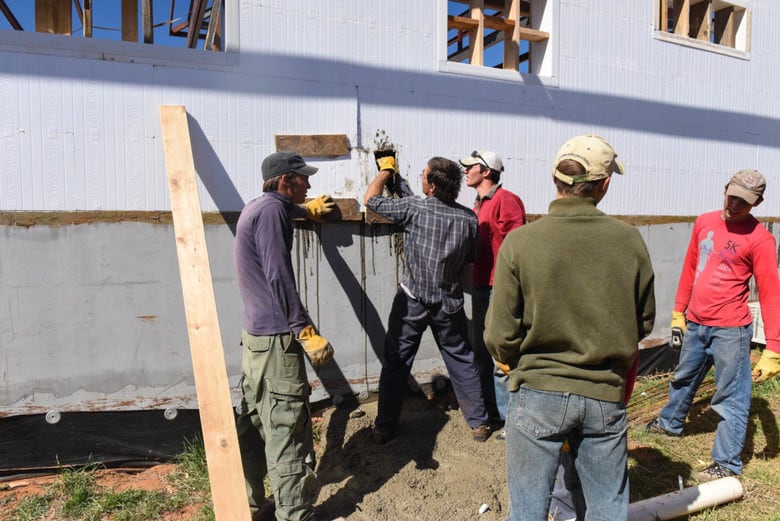
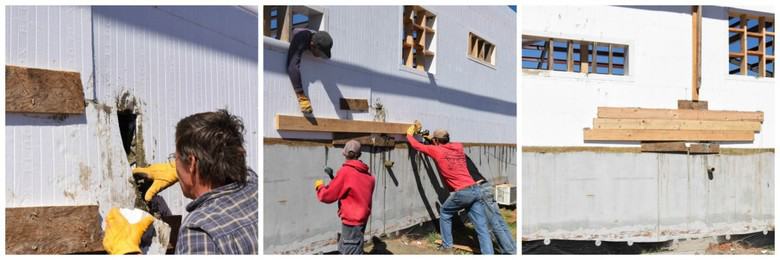
After a little while, we solved the puzzle as to why this was the worst pour we have had. Remember the black plastic supports in the ICF blocks I showed you earlier? Well, to fit the ICF blocks around the steel posts of the roof structure, we cut some of those supports, pulled the blocks apart and placed them around the posts. This weakened the blocks! Once we realized what the problem was, the boys put lots of scabs on the areas we knew would be weak.
The scabs helped tremendously but I think everyone was anxious that it would blow again! Thankfully, all attitudes were good and everyone worked together well.
Hamburgers were planned to celebrate the finish but by the time we were done (after 8 pm), everyone was too tired to enjoy them. So, grilled cheese sandwiches and a movie were our celebration.
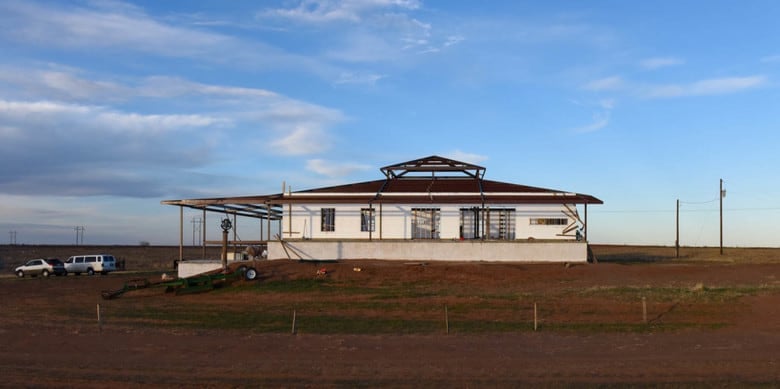

It is all shaping up very nicely. Rain always has a way of ruining the best made plans!
Thanks for the encouragement, Darlene! Hopefully, the roofers will get the metal on before anymore rain comes our way!